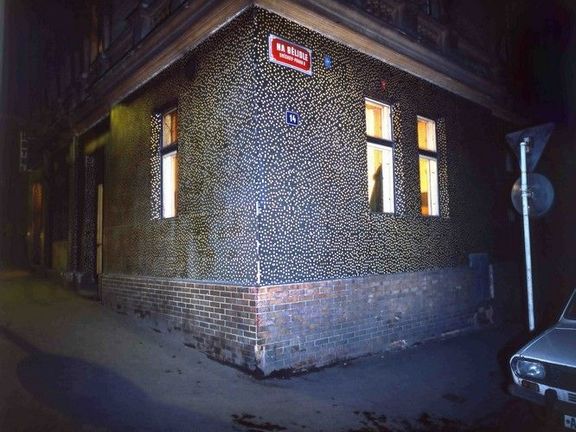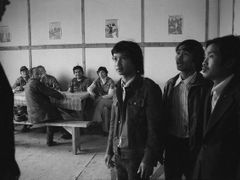
Prague - Imagine you are flipping between two TV channels, which are showing completely different programs. You don't really like either one, and there is no way they blend with each other, but together they form a viewing experience, which you chose yourself.
That's sort of what Libuše Jarcovjáková and Jiří Poláček's photography exhibition at the Langhans Gallery may feel like.
Another metaphor to describe the collection of previously un-exhibited works of these two photographers is transmission through a signal jammer. In fact, other audiovisual comparisons can be made, and the photograph compilations "Them & At night" really do, though unintentionally, create a counterpart to television newscasts.
Homosexuals and Vietnamese versus Žižkov and Smíchov
The authors take us to the early '80s, specifically between 1982 and 1985. The difference between them and television, though, is that they show a time that had meaning for someone.
These don't show the repetitive reports of factory productions, droning on decade after decade.
Jarcovjáková presents black and white memories of the Vietnamese minority and the homosexual community, while Poláček idealizes desolate neighborhoods of Žižkov and Smíchov in nighttime blues and greens.
The compilation of Jarcovjáková's works is truly a set of memories of the author. It is not a reportage or documentary photography in the strict sense of the word. The author is not an outsider to the subject of her work.
Forgotten heritage
Music from that time accompanies the projection of photos from a night club, which was dominated by the homosexual crowd, while prostitutes and taxi drivers would come in the mornings and the DJ would play songs on request for an extra buck. It all looks like a part of a forgotten heritage commonplace and homey.
Jarcovjáková uses photography here as a tool of communication with people or a way to establish relationships when no other common language exists (as in the case of the Vietnamese, to whom Jarcovjáková taught Czech), or an attempt to remember and remind herself (the snapshots from T-Club).
The seemingly carefree poses of the Vietnamese students or the banal folly of the nightly oasis carry an air of disenchantment. And although thankfully the hair styles of those days are gone forever, many other elements of that era is still present somehow.
Corners as recurring theme
"For a hippie, the gloomy Prague was a breaker, a shock, a clamp-down," adds photohrapher Jiří Poláček with his own dark tint of this Fernet-bitter story.
Actually Poláček does it with an extremely tinted flash. His reflections carry the same harshness. He seeks out the places that anyone would associate with grayness.
The recurring theme in Poláček's scenery is corners. Sharply angled houses at road crossings, disappearing into the darkness unlit by the flash.
A corner is a place for someone who wants to hide and at the same time observe the surroundings. The audience, gripped by paranoia, may think they are being followed. In reality, it is simply the best way to perceive maximum space - standing on the corner.
The vanishing points of adjacent streets draw the viewer's gaze outwards. On the other hand, the lighting is placed in his photographic tunnel.
Libuše Jarcovjáková & Jiří Poláček: Them & At Night from the early eighties.
Vodičkova 37, Langhans Gallery Prague. Open until February 27








